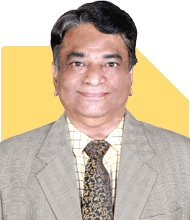Love Guru | Answer |Ask -Follow
Relationships Expert - Answered on Oct 24, 2024

I am 54 years old. A businessman and exporter. Everything was running smoothly till last year october 2023. Then someone cheated me of almost 7 crores export order. Since then a downhill. I have 13 lakhs peraonal credit card bills, business debt of 3 crores. Somehow i am unable to get new export orders too inspite of trying 24x7. My employess are gone. Only a loyal driver remains and i will be unable to pay him in coming months. My assets a office approx 45 lakhs, a property of 1 crore, another of 4-5 crores, receivables of 18 lakhs. Other savings are gone chasing the suspect overseas. What should i do now?
You may like to see similar questions and answers below
Anu Krishna |1745 Answers |Ask -Follow
Relationships Expert, Mind Coach - Answered on Mar 05, 2024
Maxim Emmanuel | Answer |Ask -Follow
Soft Skills Trainer - Answered on Aug 28, 2024
Dr Dipankar Dutta |1836 Answers |Ask -Follow
Tech Careers and Skill Development Expert - Answered on Dec 05, 2025
Ulhas Joshi |280 Answers |Ask -Follow
Mutual Fund Expert - Answered on Dec 05, 2025
Dr Dipankar Dutta |1836 Answers |Ask -Follow
Tech Careers and Skill Development Expert - Answered on Dec 04, 2025
Ravi Mittal |676 Answers |Ask -Follow
Dating, Relationships Expert - Answered on Dec 04, 2025
Anu Krishna |1745 Answers |Ask -Follow
Relationships Expert, Mind Coach - Answered on Dec 04, 2025
Anu Krishna |1745 Answers |Ask -Follow
Relationships Expert, Mind Coach - Answered on Dec 04, 2025
Mayank Chandel |2562 Answers |Ask -Follow
IIT-JEE, NEET-UG, SAT, CLAT, CA, CS Exam Expert - Answered on Dec 04, 2025
Mayank Chandel |2562 Answers |Ask -Follow
IIT-JEE, NEET-UG, SAT, CLAT, CA, CS Exam Expert - Answered on Dec 04, 2025
Mayank Chandel |2562 Answers |Ask -Follow
IIT-JEE, NEET-UG, SAT, CLAT, CA, CS Exam Expert - Answered on Dec 04, 2025
Mayank Chandel |2562 Answers |Ask -Follow
IIT-JEE, NEET-UG, SAT, CLAT, CA, CS Exam Expert - Answered on Dec 04, 2025























